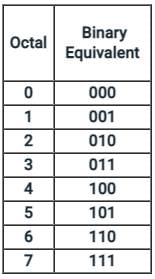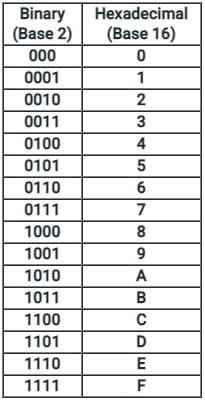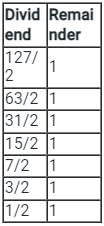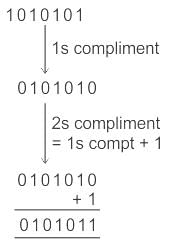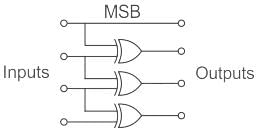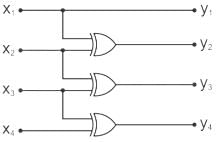Electrical Engineering (EE) Exam > Electrical Engineering (EE) Tests > Test: Number System & Binary Codes - 1 - Electrical Engineering (EE) MCQ
Test: Number System & Binary Codes - 1 - Electrical Engineering (EE) MCQ
Test Description
10 Questions MCQ Test - Test: Number System & Binary Codes - 1
Test: Number System & Binary Codes - 1 for Electrical Engineering (EE) 2025 is part of Electrical Engineering (EE) preparation. The Test: Number System & Binary Codes - 1 questions and answers have been prepared
according to the Electrical Engineering (EE) exam syllabus.The Test: Number System & Binary Codes - 1 MCQs are made for Electrical Engineering (EE) 2025 Exam.
Find important definitions, questions, notes, meanings, examples, exercises, MCQs and online tests for Test: Number System & Binary Codes - 1 below.
Solutions of Test: Number System & Binary Codes - 1 questions in English are available as part of our course for Electrical Engineering (EE) & Test: Number System & Binary Codes - 1 solutions in
Hindi for Electrical Engineering (EE) course.
Download more important topics, notes, lectures and mock test series for Electrical Engineering (EE) Exam by signing up for free. Attempt Test: Number System & Binary Codes - 1 | 10 questions in 30 minutes | Mock test for Electrical Engineering (EE) preparation | Free important questions MCQ to study for Electrical Engineering (EE) Exam | Download free PDF with solutions
Test: Number System & Binary Codes - 1 - Question 1
Which of the following statement is NOT correct?
Detailed Solution for Test: Number System & Binary Codes - 1 - Question 1
Test: Number System & Binary Codes - 1 - Question 2
Conversion of (98.75)10 into binary, octal and hexadecimal number system, respectively, is:
Detailed Solution for Test: Number System & Binary Codes - 1 - Question 2
Test: Number System & Binary Codes - 1 - Question 3
Convert the 127 decimal number into binary.
Detailed Solution for Test: Number System & Binary Codes - 1 - Question 3
Detailed Solution for Test: Number System & Binary Codes - 1 - Question 4
Detailed Solution for Test: Number System & Binary Codes - 1 - Question 5
Test: Number System & Binary Codes - 1 - Question 6
The decimal equivalent of the binary number (1101)2 is
Detailed Solution for Test: Number System & Binary Codes - 1 - Question 6
Detailed Solution for Test: Number System & Binary Codes - 1 - Question 7
Test: Number System & Binary Codes - 1 - Question 8
Find the decimal equivalent of the 6-bit binary number (101.101)2
Detailed Solution for Test: Number System & Binary Codes - 1 - Question 8
Test: Number System & Binary Codes - 1 - Question 9
The decimal number (57.375)10 when converted to binary number takes the form:
Detailed Solution for Test: Number System & Binary Codes - 1 - Question 9
Test: Number System & Binary Codes - 1 - Question 10
The range of numbers represented by an 8-bit two’s complement representation is
Detailed Solution for Test: Number System & Binary Codes - 1 - Question 10
Information about Test: Number System & Binary Codes - 1 Page
In this test you can find the Exam questions for Test: Number System & Binary Codes - 1 solved & explained in the simplest way possible.
Besides giving Questions and answers for Test: Number System & Binary Codes - 1, EduRev gives you an ample number of Online tests for practice
Download as PDF


